The Evolution of Irish Dance: From Traditional Steps to Global Phenomenon

Updated On: April 22, 2024 by Raghda Elsabbagh
Irish dance, once a tradition tucked within the rural landscapes of Ireland, has leapt onto the world stage, flourishing as a dynamic emblem of cultural expression. Known for its rapid footwork and spirited rhythms, this dance form has become synonymous with the celebration of Irish heritage. Rooted in the communal settings of village halls and festivals, the traditional steps of Irish dance reflect a tapestry of historical tales and social customs dating back centuries.
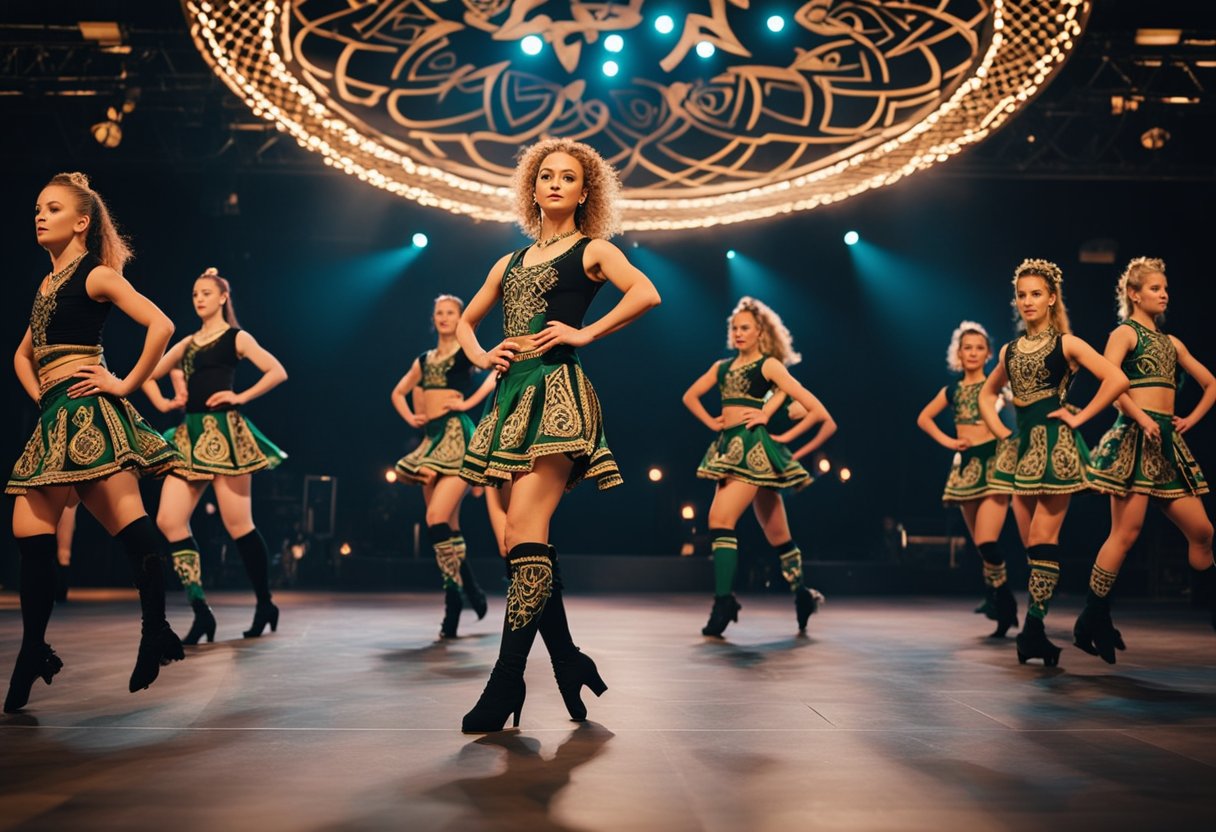
The global phenomenon of Irish dance owes much to pioneering performances that captivated international audiences, transforming what was once a local pastime into a widely recognised art form. Performances around the globe have showcased not only the dance itself but also the evolving styles that blend both contemporary and traditional elements. This fusion of old and new has cemented Irish dance as a cultural cornerstone that continues to inspire and evolve.
The proliferation of Irish dance organisations and competitions, coupled with its presence in popular culture, has played a crucial role in perpetuating its popularity. The dance’s adaptability and commitment to its preservation speak to an art form that is as vivacious as ever, charting a course for continued innovation and influence. As we delve into the evolution of Irish dance, we unravel the threads that have woven it deeply into the cultural fabric of societies far beyond the shores of Ireland.
Table of Contents
Historical Roots of Irish Dance
As we explore the rich tapestry of Irish dance, we uncover a history that is deeply intertwined with Ireland’s cultural identity. From its ancient beginnings to its resurgence during the nationalist movement, Irish dance has been an expression of a nation’s spirit and resilience.
Ancient Origins and Mythology
Our journey into the history of Irish dance begins with its ancient origins, rooted in Celtic rituals and mythology. These early forms of dance were more than entertainment; they represented an intrinsic component of religious ceremonies, seasonal celebrations, and community gatherings. The traditional Irish jig and reel, which captivate audiences even today, can trace their lineage back to these early expressions of movement and rhythm.
Influence Under British Rule
During British rule in Ireland, Irish dance and culture faced significant pressure as there were efforts to supplant native traditions with English norms. Despite these challenges, the 18th century saw the emergence of the ‘Travelling Dance Master’ in Ireland. These individuals played a pivotal role in refining and preserving the distinct steps and styles of Irish dance, ensuring the folk dance traditions continued amid external influences.
Irish Dance and National Identity
In the late 19th century, as Ireland’s quest for independence gained momentum, the Gaelic League was founded in 1893 with the mission to promote Irish culture and language. Irish dance quickly became symbolic of the nationalist movement, with the League working to bring a renewed sense of pride and cultural cohesion to a nation aspiring for self-governance. Through fostering Irish traditions, dance became a cornerstone of Ireland’s national identity, establishing itself as an indelible part of the country’s cultural fabric.
Irish Dance as Cultural Expression
Irish dance is more than just an art form; it is a rich cultural expression that showcases the heart of Ireland’s heritage. Throughout the evolution of Irish dance, it has become a global phenomenon while preserving its traditional roots.
Language of Movement
The footwork in Irish dance is a complex language of its own. Each movement communicates different aspects of Irish culture, from the vibrancy of its people to the stories passed down through generations. The intricate steps are not merely for visual pleasure but serve as a cultural lexicon that connects dancers with their history.
Music and Rhythmic Innovations
The music accompanying Irish dance has undergone numerous innovations, integrating both traditional tunes and contemporary rhythms. The fusion of the old with the new echoes Ireland’s journey from isolation to global integration, reflecting changes in cultural identity while retaining a deep connection to the past.
Costumes and Visual Appeal
Irish dance costumes are instantly recognisable for their visual appeal, featuring bold colours and intricate designs. These are emblems of the nation’s pride and cultural expression, with each pattern and hue carrying its own symbolism and story. The visual spectacle of Irish dance costumes enriches the storytelling woven through the dance, enhancing the overall impact on audiences worldwide.
Evolution of Irish Dance Styles
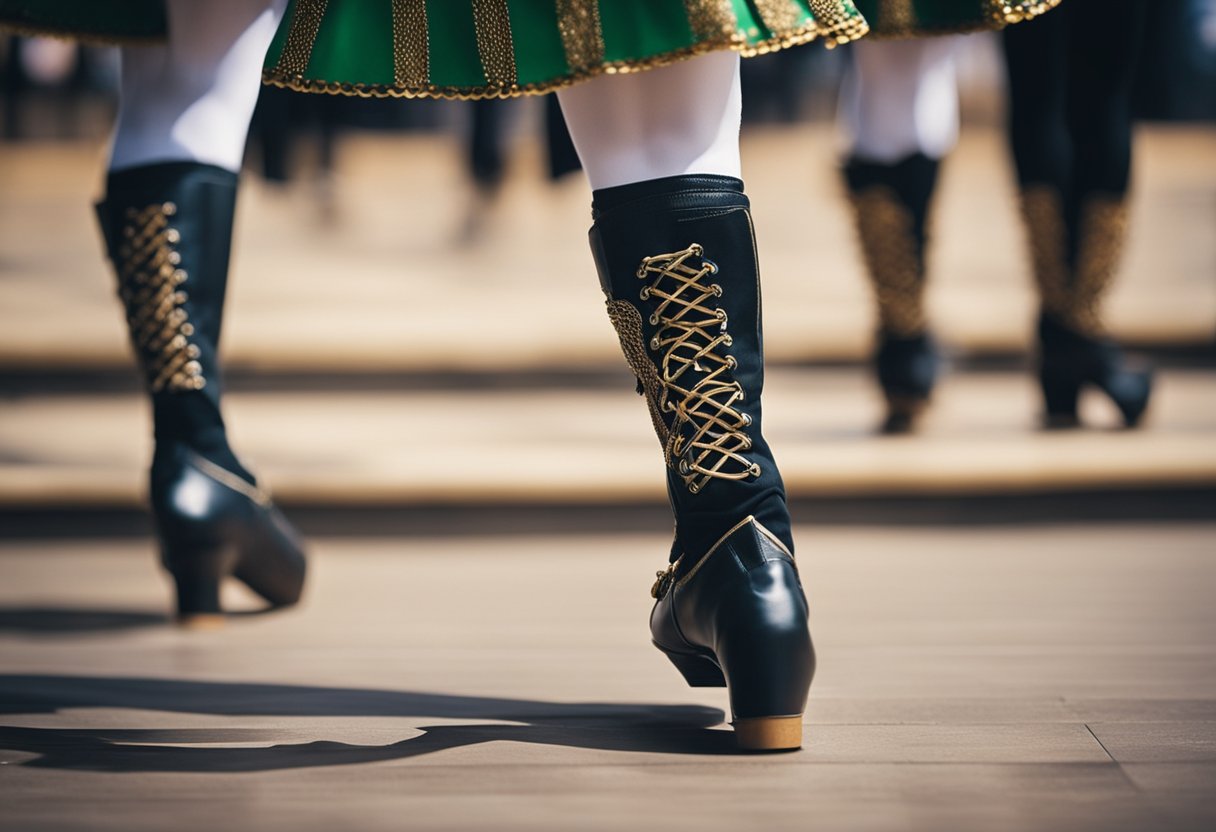
Irish dance has undergone a dynamic evolution, transitioning from its traditional roots to a modern global phenomenon. Our exploration will delve into the complexities and adaptations that have marked its journey.
From Traditional to Modern
Initially, Irish dance was largely characterised by its traditional step dance, a form that focused on precise and rapid leg and foot movements, while the upper body remained largely stationary. This style has been recorded in Irish history for centuries, tracing back to Druidic and Celtic influences. The traditional format of Irish dance has been invigorated over time, often showcased during significant events like St. Patrick’s Day.
A transformative period for Irish dance commenced in the 18th century, with the emergence of the ‘dancing master’. These itinerant teaching figures travelled across Ireland, integrating the Danceus technique, elements of tap borrowed from English and African American influence, and lighter balletic movements. The cultural tapestry of Irish dance began to reflect a more sophisticated and structured art form, including regulated competitions and schools dedicated to honing the craft.
Dancers like Gene Kelly further influenced the perception of Irish dance by incorporating step dance techniques into broader theatrical contexts, thereby increasing its international visibility and allure.
Fusion with Other Dance Forms
As Irish dancers ventured across geographical and creative boundaries, they began to intertwine elements of various dance forms with the traditional Irish steps. Ballet’s grace and folk dance’s earthy qualities were woven into the fabric of Irish dance, producing a more narrative and expressive style.
The phenomenon of shows like Riverdance introduced a renewed interest and contemporary approach to Irish dance. Drawing from diverse cultural backgrounds, Riverdance and similar shows have used Irish dance as a core while seamlessly integrating global dance forms.
This amalgamation has produced novel interpretations of Irish dance, fostering a sense of steps of freedom—a liberation from the constraints of the strictly traditional forms, encouraging further artistic exploration and contemporary relevance.
By embracing these fusions, Irish dance remains not only a testament to Irish heritage but also a vibrant, evolving art form resonating with audiences worldwide.
Global Expansion and Diaspora
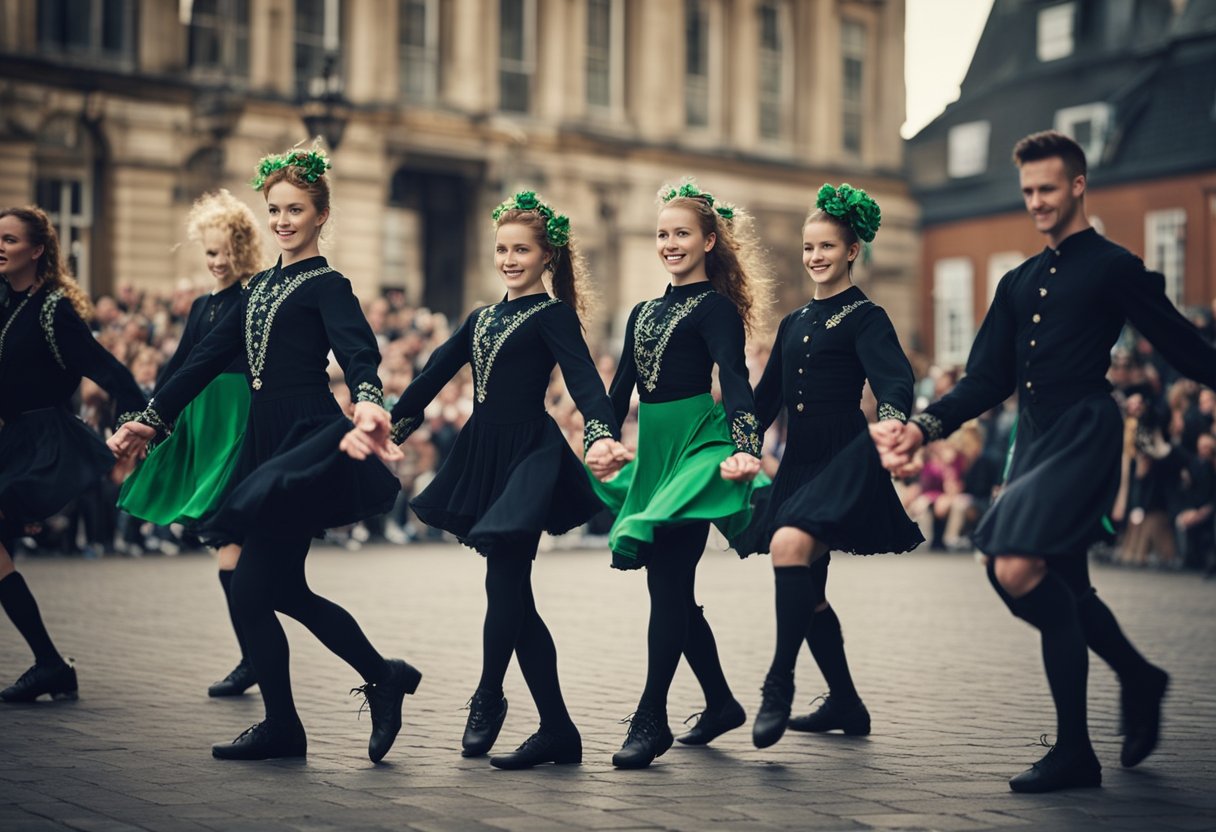
The reach of Irish dance has extended far beyond its island origins, weaving into the cultural fabric of communities worldwide through dynamism and adaptability.
Irish Dance in America
The American love affair with Irish dance took centre stage with the likes of Michael Flatley and Jean Butler electrifying audiences in the 1990s. Their performances in phenomenons like Riverdance illustrated not just a show but the movement of a tradition across the Atlantic. Major cities like San Francisco became hotspots for Irish dance schools, embedding this rich cultural expression within the diverse mosaic of American dance forms.
- Key American Contributions to Irish Dance
- Organisations: Established, such as the North American Feis Commission, promoting competitions and standards.
- Influencers: Including figures like Morgan Bullock, an African-American Irish dancer incorporating her heritage into her performance, symbolising inclusivity in Irish dance.
Spreading Beyond the Irish Shores
The diaspora has taken Irish dance to the corners of the world, to places like Australia and New Zealand. These regions host numerous competitions and events, rallying both the locals and those of Irish descent to celebrate with jigs and reels. Performances in these far-flung locales often incorporate local cultural elements, demonstrating the dynamic and adaptive nature of Irish dance on a global scale.
- Global Events and Competitions
- Australia: Australasian Oireachtas and local feiseanna.
- New Zealand: Diverse dancing schools and their participation in international championships.
Inclusivity and Diversity in Modern Times
Irish dance today is a global phenomenon celebrated by a range of ethnicities and nationalities. It’s a cultural tapestry that’s both preserved its traditions and opened its arms to diversity. From Morgan Bullock’s viral dance videos, which echo Irish rhythms with a twist of multicultural vibrancy, to global championships where dancers from all backgrounds meet, the essence of Irish dance continues to evolve.
- Diversity and Irish Dance
- Integration: Encouraging a meld of Irish dance with local and ethnic dances.
- Representation: Emphasising diverse faces like Morgan Bullock, making Irish dance resonate with a broader audience.
Irish Dance in Popular Culture
Irish dance has left its footprint on global popular culture, shining a spotlight on the art form thanks to major shows and documentaries. This section will explore two significant avenues through which Irish dance has achieved international acclaim.
Riverdance and Eurovision Breakthrough
Riverdance evolved from a Eurovision Song Contest interval act into a full-length stage show that captivated audiences worldwide. Its electrifying debut at the 1994 Eurovision finals, hosted by RTÉ, marked a turning point, as millions witnessed a blend of traditional and contemporary Irish dance and music. The performance was a catalyst that propelled Irish dance onto the global entertainment stage as a phenomenon.
Documentaries and Live Performances
Documentaries like “Jig: The Story of Irish Dance” by Ruán Magan offer viewers detailed insights into the competitive world of Irish dancing. These works showcase not just the steps and music but also convey the dedication behind every live performance. Through in-depth storytelling, they reveal the intricate tapestry woven by generations of dancers and the evolution of Irish dance as both an enduring tradition and a vibrant, living entertainment form.
Irish Dance Organisations and Competitions
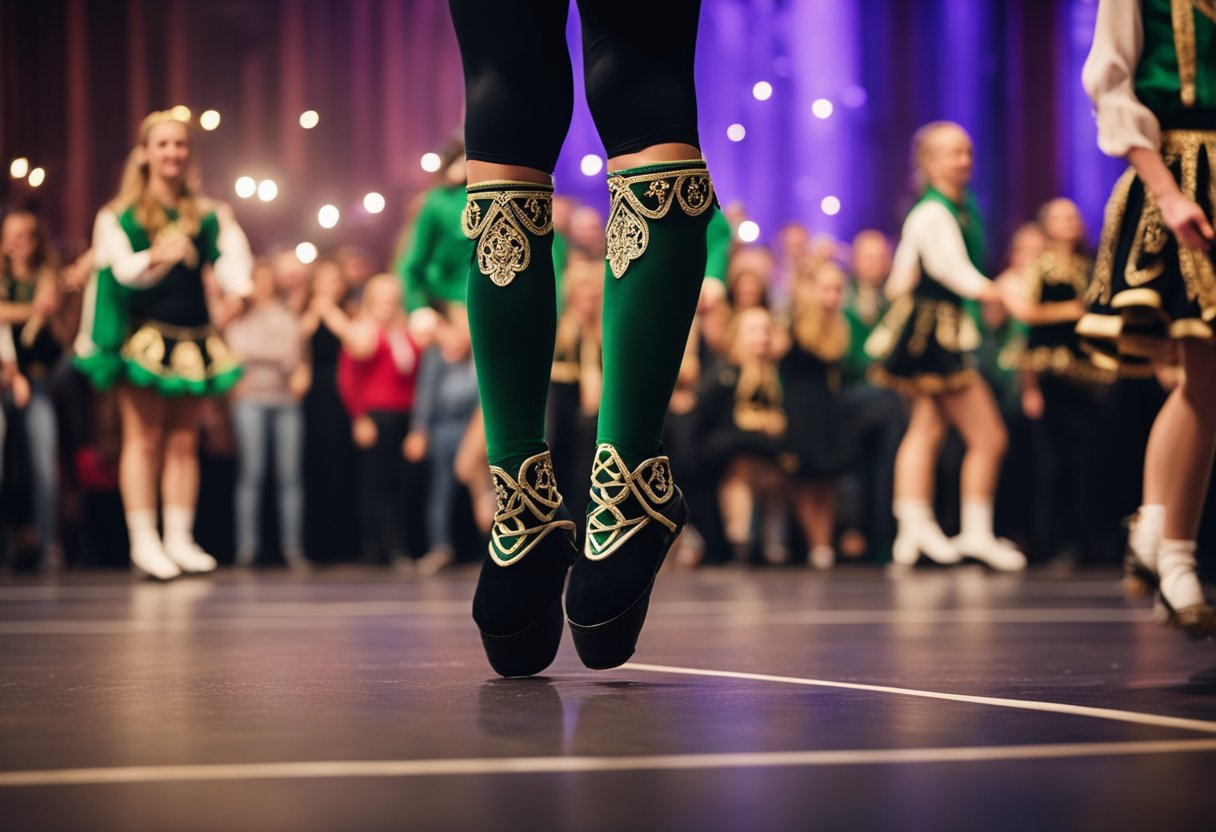
Irish dance has a robust organisational structure that governs competitions and festivals, essential to its cultural dissemination and integrity.
Role of the Gaelic League
The Gaelic League (Conradh na Gaeilge) has been instrumental in the preservation and promotion of Irish culture, particularly through dance. Founded in 1893, it initially focused on the Irish language but quickly expanded to include Irish dance as a cornerstone of its cultural revival efforts. The league has not only nurtured the tradition at a local level but also supported its spread worldwide.
Irish Dance Commission and Feiseanna
The Irish Dancing Commission (An Coimisiún le Rincí Gaelacha) is the globally recognised authority for promoting and regulating Irish dance. Established in 1930, it supervises a network of teachers and adjudicators and sanctions a series of competitions known as feiseanna (plural of feis). Among these, the World Irish Dancing Championship stands out as the pinnacle, often likened to the Olympics of Irish dance. Feiseanna and festivals provide dancers with platforms to showcase their talent, adhere to standards, and celebrate achievements within the Irish dance community.
Cultural Heritage and Preservation
We explore the profound impact of Irish dance as a means of preserving cultural heritage. This section delves into its connections with Irish folklore and mythology and the importance of archiving materials and fostering dance education for future generations.
Influence of Folklore and Mythology
Irish dance is deeply interwoven with Ireland’s cultural tapestry, and its narrative is incomplete without acknowledging the influence of folklore and mythology. These stories, passed down through the ages, echo in the rhythms and movements of the dance. Tales of legendary figures and epic sagas from Irish mythology play out in the choreography and inspire new interpretations, ensuring that the heritage lives on through performance.
Archive Materials and Dance Education
Robust efforts in archiving materials further cement the preservation of Irish dance. Standardised written records, video documentation, and oral histories form the cornerstone of these archives, serving as invaluable resources for Irish dance practitioners and students. Dancing schools like the renowned Boyle Irish Dance Academy play a pivotal role in this educational process, imparting traditional dance forms to new generations and fostering continued growth within this vibrant art form. Through such dedicated teaching methodologies, we ensure the longevity and evolution of Irish dance, safeguarding it as an integral aspect of our cultural heritage.
Impact of Social and Political Events
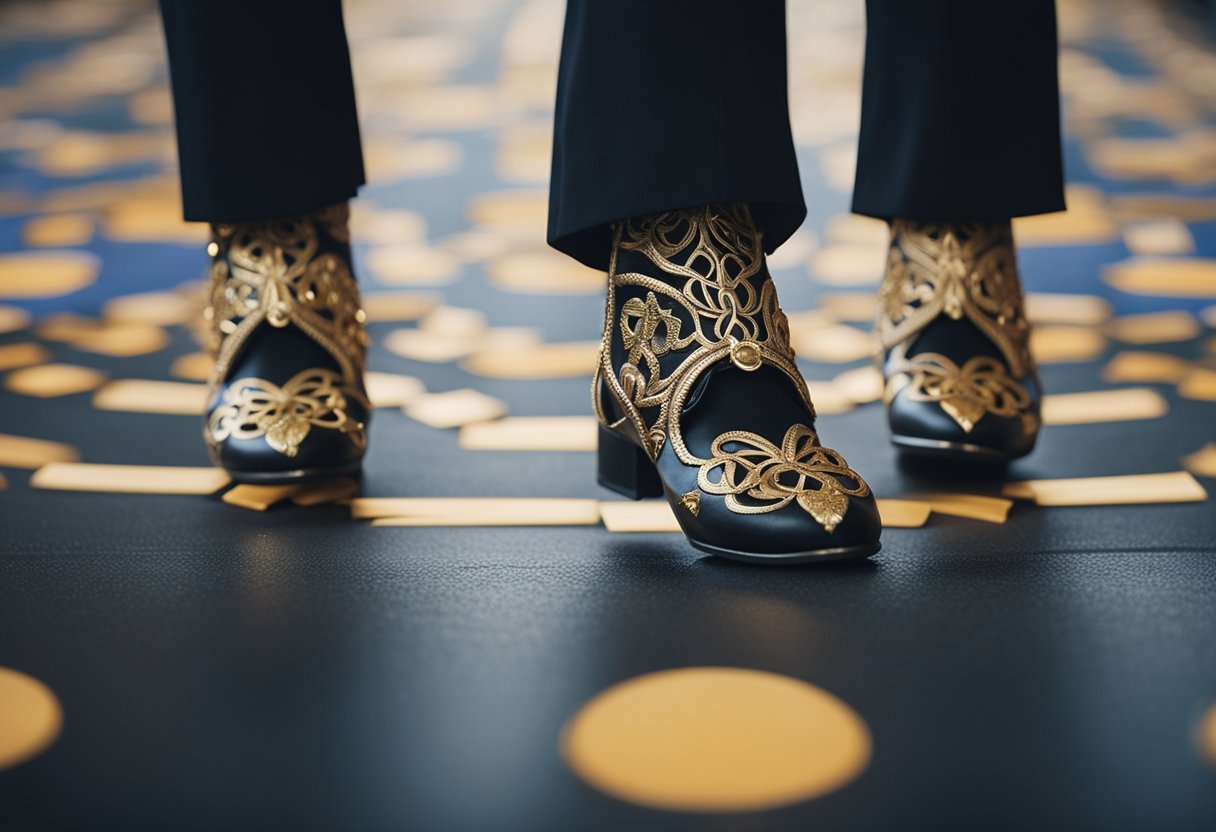
In examining Irish dance, it’s crucial to understand how social and political events have shaped its development and expansion. The phenomenon didn’t occur in a vacuum but was influenced by significant historical moments.
Immigration Waves
During the mid-19th century, the Great Famine prompted a mass exodus of Irish people, bringing with them their deep-rooted cultural traditions, notably dance, to shores like America and Canada. The transatlantic movement of people created pockets of Irish communities abroad, serving as cultural preservers of traditional Irish dance, ultimately setting the stage for its spread globally.
Celtic Tiger and Economic Shifts
The term Celtic Tiger refers to Ireland’s rapid economic growth between 1995 and 2007. Its effect on the arts, including dance, was profound with increased investment leading to a broader stage for performances. The economic prosperity also facilitated a newfound confidence in Irish culture, spurring the country to promote its heritage on the world scene.
Dance During the COVID-19 Pandemic
The COVID-19 pandemic drastically changed the landscape for performances, but Irish dance demonstrated resilience and adaptability. Virtual platforms became the new stage for dancers, allowing them to maintain a connection with audiences worldwide despite lockdowns and social distancing. The pandemic underscored the dance community’s unity, as online competitions and classes kept the spirit of Irish dance alive during challenging times.
Advancements in Irish Dance Production
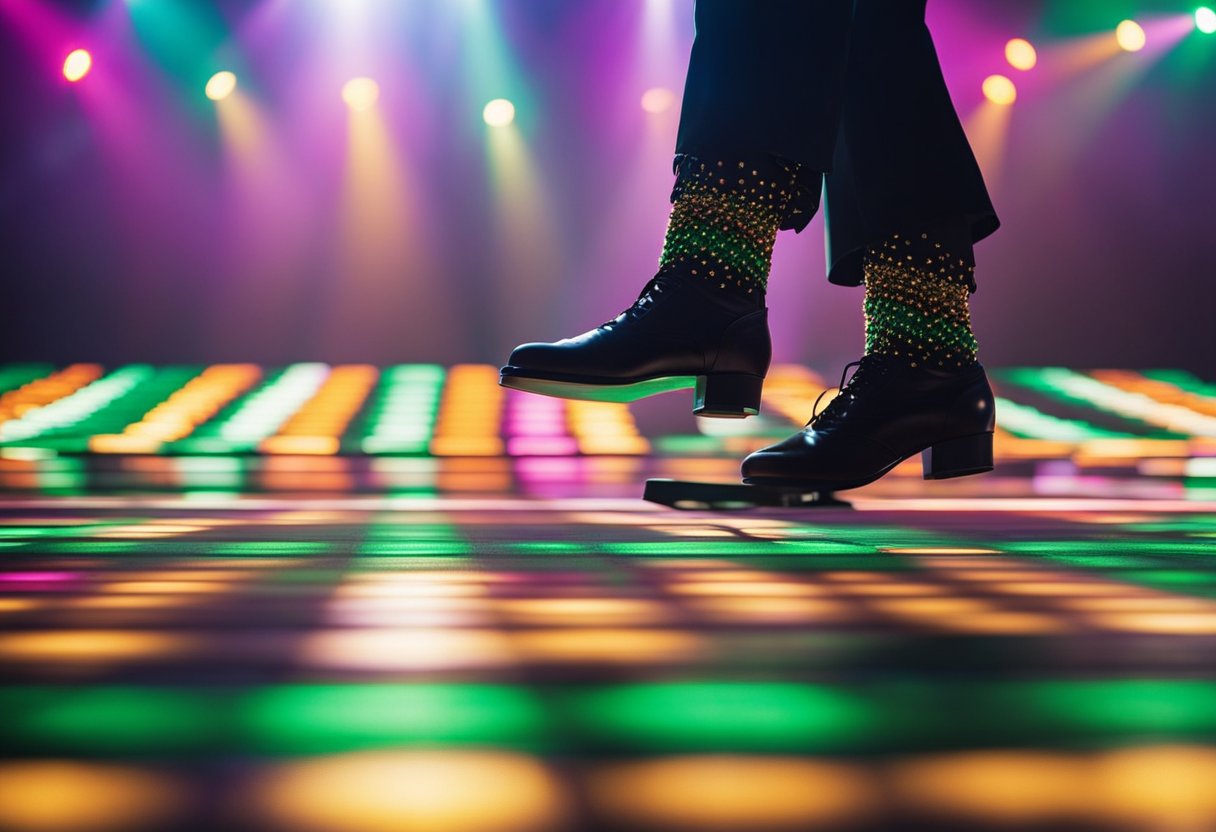
In the evolution of Irish dance production, recent years have seen significant strides, both on stage and online, transforming the art form into a global spectacle with broader engagement.
Noteworthy Directors and Producers
The dynamism behind Irish dance’s leap onto the global stage owes much to creative minds like Michael Flatley. With his innovative productions, Flatley—who gained fame through Riverdance and later Lord of the Dance—has cemented his position as a key figure in modern performances. Pioneering directions, such as those by Ruan Magan, have also contributed to the multi-dimensional expansion, blending traditional Irish themes with contemporary artistic expressions.
Technology and Online Presence
As sophistication in staging has grown, so too has the online ecosystem surrounding Irish dance. Websites like the Boyle Irish Dance Academy of San Francisco have been instrumental in harnessing the internet to reach a global audience. This online presence ensures that Irish dance remains accessible, with a wealth of resources available for both enthusiasts and professionals. Further, technology has facilitated the live streaming of performances, allowing productions like Riverdance to charm audiences well beyond the limitation of physical theatres.
Future Direction of Irish Dance
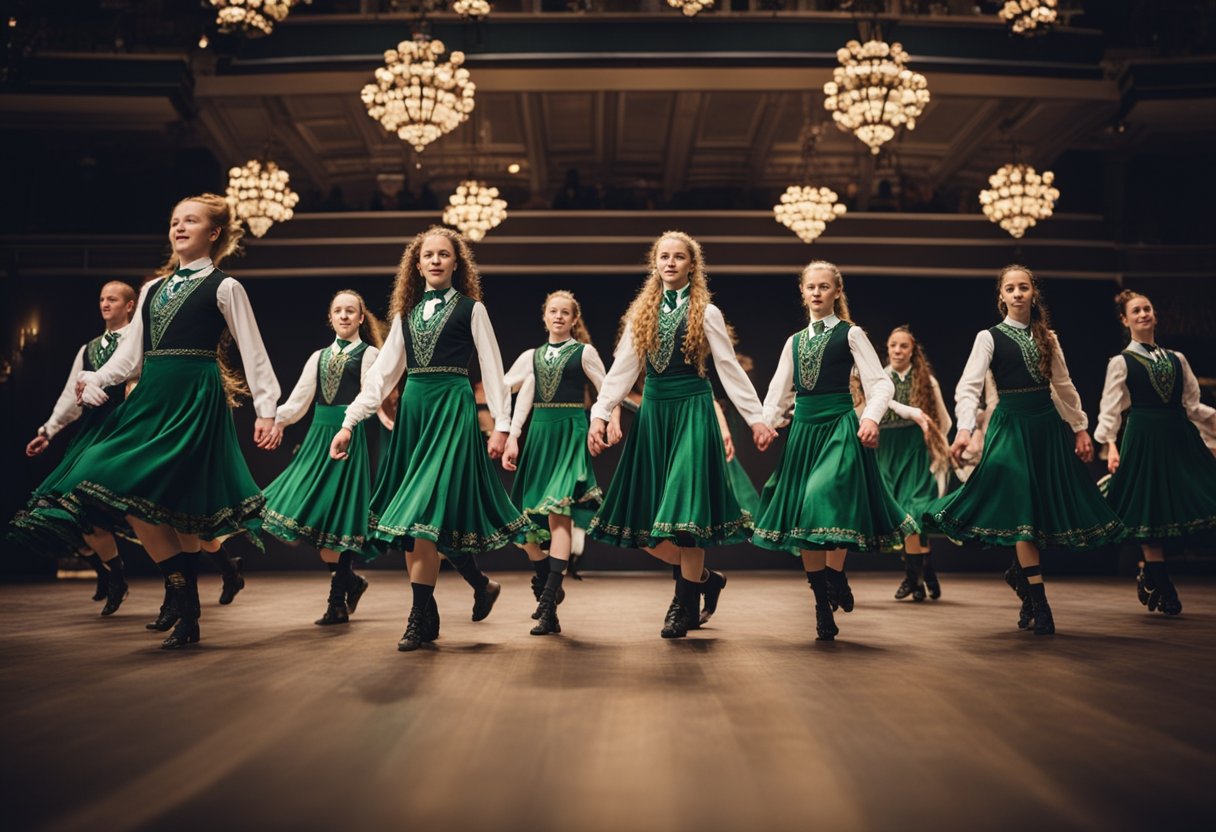
As we look to the future of Irish dance, we see it steadfastly maintaining its position as a global phenomenon, continually branching out and intersecting with diverse cultures and traditions. The very nature of Irish dance as a genre lends itself to innovation and fusion, suggesting an exciting evolution is on the horizon.
Irish dance has increasingly become an expression of resistance and national identity, often drawing similarities with the vibrancy and energy found in African-American dance styles. This merging of cultural movements highlights the diversity of the art form. The steps of freedom that once symbolised Irish cultural heritage are now steps that resonate on a worldwide stage.
- Collaborations: We anticipate pioneering collaborations between Irish dancers and international artists.
- Innovation: The incorporation of contemporary music and technology into performances.
The future direction of Irish dance involves a rich tapestry where traditional Irish steps meet eclectic global influences. Here are some key aspects:
- Educational Programmes: We expect to see more global educational programmes designed to teach Irish dance, emphasising cultural exchange and inclusivity.
- Experimental Choreography: The exploration of Irish dance through the lens of other dance genres is predicted to lead to groundbreaking performances.
In embracing these trends, Irish dance will continue to solidify its place as more than a dance form but a vibrant, ever-evolving medium for storytelling, community, and identity. Through this, we ensure not only the survival but the thriving of Irish dance as a cherished cultural expression across the globe.
Frequently Asked Questions
In this section, we address some common queries related to Irish dance, its traditions, and how it has branched out across the world.
What are the origins of traditional Irish dancing?
Traditional Irish dancing has a rich history that traces back to when Ireland was primarily a society of agrarian communities. These dances were often performed during social gatherings and religious festivals. For an in-depth look at its history, the origins of Irish dancing are rooted in the country’s Celtic and Gaelic heritage and have evolved over centuries.
How has Irish dance evolved as it has spread globally?
As Irish dance extended beyond Ireland, it began to incorporate new influences and styles. The captivating rhythm and lively spirit of Irish dance became globally known through international competitions and shows like Riverdance. The art form has adapted yet retained its core patterns and traditions, as highlighted in the globalisation of traditional Irish dance.
What attire is typically worn for Irish step-dancing performances?
Dancers usually wear elaborate dresses, often adorned with Celtic designs, and soft or hard shoes, depending on the dance style. Costumes have evolved over time, but they maintain a nod to the traditional aesthetic. For performances, male dancers typically don attire consisting of a shirt, vest, and tailored pants.
Which are the most popular traditional Irish céilí dances?
Céilí dances are social dances that can involve pairs or small groups. The most popular céilí dances include the ‘Walls of Limerick,’ ‘The Siege of Ennis,’ and ‘The High Cauled Cap.’ Each dance features specific steps and movements that are part of Ireland’s cultural fabric.
How do the techniques of Irish step dancing differ from other forms of dance?
Irish step dancing is known for its rapid leg and foot movements while maintaining a stiff upper body. Unlike many dance forms where the arms are used for expression, Irish dancers keep their arms still to emphasise their intricate footwork. The techniques of Irish step dancing are a distinctive aspect of this cultural dance form.
Where can one find classes for Irish step dancing?
Irish step dancing classes can be found worldwide in dance schools and cultural centres dedicated to sharing Irish heritage. For those looking to start their journey in Irish dance, searching for local Irish dance academies or community workshops is a great way to begin. Online resources and tutorials can also serve as a valuable tool for learning the basics.






